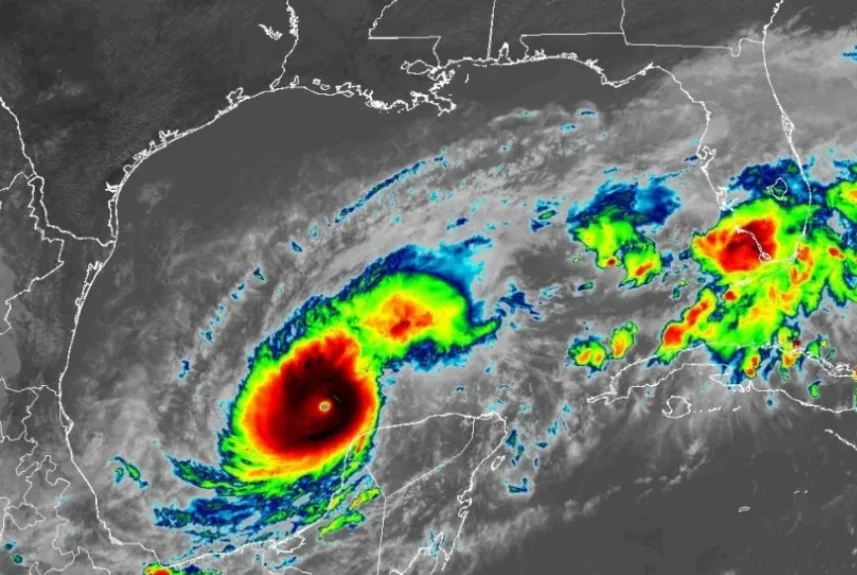Hurricane Milton: What You Need to Know About the Storm’s Impact on Florida
Hurricane Milton is approaching Florida, prompting evacuations and airport closures. Stay informed about safety measures, travel updates, and more. As Hurricane Milton approaches the Florida coast, residents and travellers alike are bracing for its impact.
This article provides a comprehensive overview of the current situation, including evacuation zones, airport operations, and safety measures across various counties in Florida.
Overview of Hurricane Milton
Hurricane Milton has rapidly intensified in the Gulf of Mexico and is currently classified as a Category 3 hurricane, with sustained winds reaching up to 120 mph. The storm is expected to make landfall along Florida’s Gulf Coast, particularly affecting areas like Tampa Bay and Fort Myers, between Wednesday evening and midnight. As the storm approaches, mandatory evacuations have been issued in several counties to ensure public safety.
Current Status

- Maximum Sustained Winds: 120 mph (Category 3)
- Projected Landfall: Between 6 p.m. ET and midnight on Wednesday
- Affected Areas: Tampa Bay, Fort Myers, Orlando, Ocala, and surrounding regions
Airport Operations During Hurricane Milton
Orlando International Airport (MCO)
Orlando International Airport (MCO) has announced that it will cease commercial operations starting Wednesday morning in anticipation of Hurricane Milton.
While MCO will remain open for emergency flights, it is not equipped to serve as a shelter for residents during severe weather events. Travelers are advised to check with their airlines for flight updates.
Other Florida Airports
- Miami International Airport (MIA): Currently operational but monitoring the storm closely.
- Tampa International Airport (TPA): Set to suspend operations at 9 a.m. Tuesday.
- Fort Myers Airport (RSW): Expected to be impacted by the hurricane; travellers should confirm flight statuses.
- Palm Beach International Airport (PBI): Open but subject to change based on storm conditions.
Evacuation Zones and Safety Measures
Mandatory Evacuations
 In light of Hurricane Milton’s impending arrival, several counties have issued mandatory evacuation orders:
In light of Hurricane Milton’s impending arrival, several counties have issued mandatory evacuation orders:
- Hillsborough County: Mandatory evacuations for Zones A and B.
- Pinellas County: Evacuations for long-term care facilities in Zones A, B, and C.
- Manatee County: Mandatory evacuations for Zones A and B.
- Pasco County: Local state emergency declared with mandatory evacuations for vulnerable areas.
Residents are urged to leave before local officials issue evacuation orders if possible. Delaying evacuation can lead to severe traffic congestion and longer travel times.
Safety Tips
- Know Your Evacuation Zone: Familiarize yourself with your area’s evacuation zones.
- Prepare an Emergency Kit: Include essentials such as food, water, medications, and important documents.
- Stay Informed: Keep track of local news updates regarding the storm’s progress.
- Avoid Flooded Areas: Do not attempt to drive through flooded roads; turn around instead.
The Role of the Florida Department of Emergency Management
The Florida Department of Emergency Management (FDEM) is actively coordinating state preparedness efforts for Hurricane Milton. They are engaged in over 600 missions aimed at protecting critical infrastructure and ensuring public safety. This includes:
- Establishing emergency shelters
- Coordinating debris removal efforts
- Pre-staging resources along evacuation routes
FDEM encourages residents to have a family hurricane preparedness plan in place before the storm hits.
Impact on Schools
In Miami-Dade County, public schools (MDCPS) have announced closures in anticipation of Hurricane Milton‘s impact. Parents are advised to stay updated on school communications regarding closures and reopening plans.
Tracking Hurricane Milton
As the storm approaches landfall, residents can access live tracking updates through various weather services. Monitoring resources such as the National Hurricane Center (NHC) will provide real-time information on wind speeds, storm surges, and potential changes in the hurricane’s path.
Wind Speeds and Categories
Understanding hurricane categories can help residents gauge the potential impact:
| Category | Wind Speeds (mph) | Damage Potential |
|---|---|---|
| 1 | 74-95 | Minimal |
| 2 | 96-110 | Moderate |
| 3 | 111-129 | Extensive |
| 4 | 130-156 | Severe |
| 5 | 157+ | Catastrophic |
Currently classified as a Category 3 hurricane, Milton poses significant risks for life-threatening impacts along its projected path.
Conclusion
As Hurricane Milton approaches Florida’s coastline, residents and travellers must stay informed about evacuation orders, airport operations, and safety measures. By preparing adequately and following official guidance from local authorities, individuals can enhance their safety during this significant weather event.
